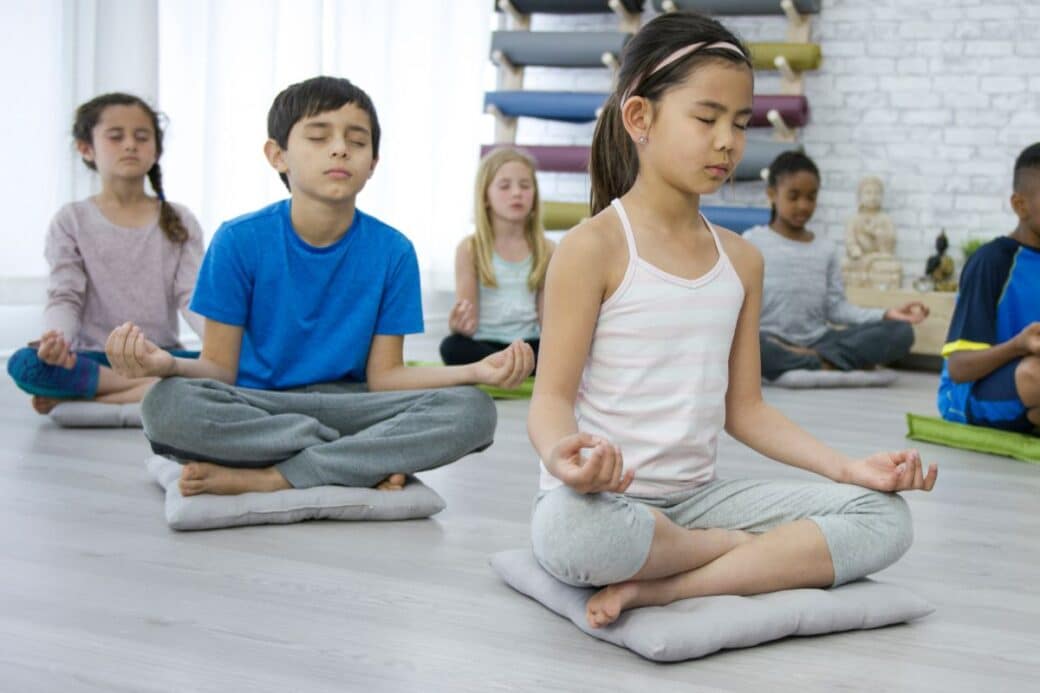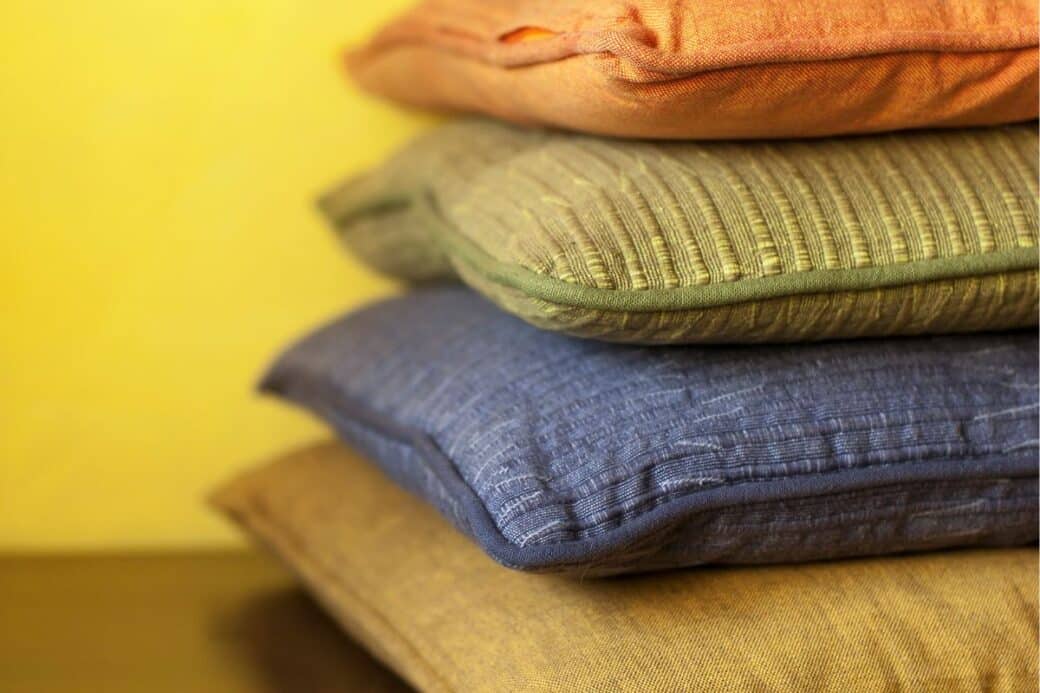I have been practicing meditation for a long while now. After a long grueling day at work, I’d like to reconnect with my inner self and slow the day down with my practice. It has worked well so far until recently.
These past few months, I often experienced back pain and trouble concentrating during my meditation sessions. Unfortunately, this situation made it difficult for me to achieve the deep relaxation and focus I was seeking.
After trying out meditation cushions, I found one that provided the comfort and support I needed. This wonderful cushion helped to reduce my back pain and allowed me to concentrate more effectively during my meditation sessions.
The cushion was also stable and had a non-slip cover, which held me in place without needing to adjust my sitting position every few minutes. This feature helped reduce distractions and increase focus, making my meditation sessions more rewarding.
If you have yet to try but are interested in buying a meditation cushion, here are a few things you need to know.
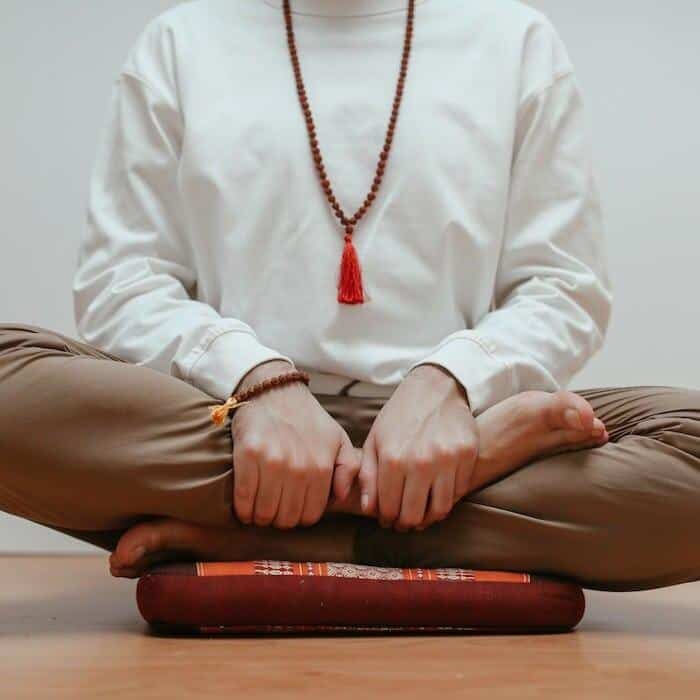
What is a Meditation Pillow/Cushion?
A meditation cushion is a tool that can provide comfort, stability, support, proper posture, and spine alignment correction. All these qualities lead to a more fulfilling and longer meditative state.
These cushions are usually filled with breathable and weight-supporting material like buckwheat hulls, kapok, and sturdy foam or sponges. Coconut fiber is a new addition to these types of materials.
Inflatable meditation cushions are growing in popularity due to their portability and fast set-up-and-storage design. In addition, the latest versions are easy to inflate and deflate.
[read more]
What do meditation cushions do?
The following five reasons are what attract people to meditation cushions. Each benefit is interconnected, and each one improves the next in creating the best meditation experience.
1. Comfort
Meditation cushions are designed to provide a comfortable surface for sitting. They are often filled with buckwheat, kapok, or foam. These materials mold to the body yet are firm enough not to lose their shape if you sit down on them for too long.
This firm cushioning can help reduce discomfort and pain associated with sitting on hard surfaces for extended periods of time. Additionally, the cushion’s shape can also help promote proper spinal alignment, which can help reduce tension in the back and neck.
2. Posture and Alignment
Meditation cushions are designed to help the sitter maintain proper posture and alignment. They are shaped to promote an upright sitting position, which can help to improve breathing, reduce tension, and promote relaxation.
This position is important because proper alignment can help to reduce distractions and improve focus. Additionally, proper alignment can help to reduce joint stress, which can help to prevent injury and promote long-term health.
The Seven-Points Meditation Posture
This a set of instructions developed by the Tibetan Buddhist teacher, Chögyam Trungpa Rinpoche, to guide practitioners in their practice.
The seven-point meditation posture is a sitting technique, consisting of seven recommendations for proper body positioning. However, you may make adjustments to suit your needs. These seven body points are:
- Sitting – Sit with your legs crossed in a comfortable position.
- Spine – Place your hands on your lap or knees.
- Hands -Straighten your back, aligning your spine with the natural curvature of your neck.
- Shoulder – Relax your shoulders.
- Chin – Tuck your chin slightly inwards to lengthen the back of your neck.
- Jaw – Relax your facial muscles and gaze softly downward.
- Gaze – Keep your mouth closed and breathe naturally through your nose.

3. Stability
There are times when you like to readjust your position to ease discomfort. Cushions are designed to be non-slip and prevent them from sliding around.
Stable sitting can help reduce distractions and keep the sitter focused on the practice. Additionally, the stability provided by the cushion can help reduce muscle tension, which can help to promote reduced stress and relaxation.
4. Support
Meditation cushions are designed to mold to the shape of your buttocks to provide comfort. However, these cushions are unique because they are not easily flattened after prolonged and constant use.
Firmness is a must-have quality for meditation cushions since practitioners are after consistent sitting posture. In addition, it should be capable of being refilled or reduced in filling to extend its usability.
5. Longer Duration
The culmination of all first four the reasons why people buy meditation cushions is to extend the duration of their practice.
This time extension can lead to a more profound meditation experience. Longer sessions promote relaxation, reduce stress, and improve overall well-being. Additionally, a deeper practice can promote personal growth and spiritual development.
6. Portable
Many of these cushions are lightweight and portable–making them easy to carry with you wherever you go. This means that you can take your practice with you wherever you go, whether you are traveling, at work, or simply out and about. benefits of mindfulness whereverlp to make your meditation practice more consistent and accessible, allowing you to reap the benefits of mindfulness wherever you are.
7. Multipurpose
The use of these cushions is not exclusively for meditation but can also be used for other purposes. For instance, they can be used as a comfortable seat for reading or watching TV, as well as a support cushion for yoga or other forms of exercise. A lot of people also prefer the firmness of the meditation cushion when they sleep. This added benefit makes them an excellent choice for anybody searching for a diverse and useful product
8. Visual Cue
Meditation cushions provide a visual cue that helps to create a designated space for practice. The simple act of sitting on a cushion can signal to your mind and body that it is time to meditate, making it easier to get into a meditative state. Furthermore, the visual cue provided by the cushion can help to create a sense of calm and focus, making it easier to let go of distractions and concentrate on your practice.
Factors to Consider When Choosing the Best Meditation Cushion for You
Choosing the best meditation cushion for you is a personal decision that depends on your individual preferences and needs. Considering these factors and trying out different cushions, is important for you because it can greatly impact the quality of your practice.
- Shape and size
The cushions come in various shapes and sizes, so consider what type of cushion will be most comfortable for your body. Round cushions, such as zafus, are a popular choice, but crescent-shaped cushions, such as the V-shaped zafu, can also be comfortable.
- Height
The height of the cushion is important, as it will determine how high your hips are elevated. Ideally, your hips should be higher than your knees to maintain proper alignment and prevent discomfort.
Consider your body type and flexibility when choosing the height of your cushion.
- Filling
The cushions can be filled with various materials, such as buckwheat hulls, kapok, or foam. Consider what type of filling will be most comfortable for you and provide the right amount of support.
- Portability
If you plan to take your cushion with you to meditation classes or retreats, consider how portable and easy to transport it is.
- Budget
Meditation cushions can vary in price, so consider your budget when selecting a cushion.
- Try it out
If possible, try out different types of cushions to see what feels most comfortable for you. Many meditation studios or stores that specialize in meditation supplies have cushions available for trial use.
- Type of Meditation
There are meditation therapies that require specific cushions. In choosing a meditation cushion, you need to know first the types of cushion for a specific meditation.
The reason for this is there are the right meditation mat or cushions because different types of meditation have different postural requirements and may benefit from different levels of support.
What are the Different Kinds of Meditation Cushions?
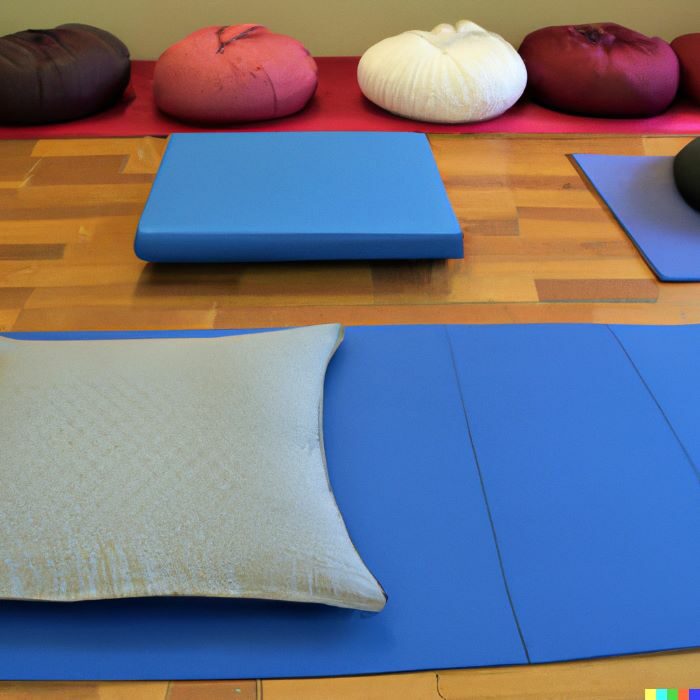
The most popular meditation cushions for sale are the zafu and zabuton. When used together, they greatly improve your practice.
Other cushions can also be used as a suitable alternative to meditation cushions, such as the versatile yoga booster pillow and orthopedic cushion for chair-sitting meditation.
Zafu
This medium-sized meditation cushion promotes a more comfortable and profound meditation by supporting the body’s lower regions. It comes in various shapes for you to choose from.
Round
A round zafu cushion is a classic meditation cushion design. It provides a solid seating position, promoting healthy posture and stability.
The circular design also allows you to easily alter your sitting posture as needed, which is advantageous if you are new to meditation or have difficulty sitting for lengthy periods.
Crescent
This cushion has a curved form that is broader in the back and narrower in the front, similar to an orange carpel. This feature is intended to give lower back and hip support when sitting in different cross-legged postures. In addition, the front curve provides a comfortable space to tuck your feet in.
The form promotes a secure seating pose and pressure relief on the hips and knees. Therefore, this cushion is very useful for persons suffering from back discomfort or having difficulty sitting for lengthy periods.
Here is a video that can aid you in how to use a zafu cushion:
Square
A square zafu cushion is designed to be versatile and provide support in different sitting positions. It has four sides and can be used to sit in a cross-legged position, or it can be placed on a chair to raise the hips and improve posture.
Square zafu cushions can be helpful for people who have trouble sitting on the floor. The shape makes it easy to adjust your sitting position and raise the hips, which can help reduce pressure on the knees and ankles.
U or V-shaped
This type of cushion design allows for a comfortable and stable seated position. As a result, help reduce pressure on the tailbone, improve spinal alignment, and support the thigh. They are also great for people who prefer to sit in a chair.
Zabuton
A zabuton(sitting futon) is a traditional Japanese cushion typically used in meditation and yoga practices. It is a rectangular cushion larger than a zafu cushion. It provides support for the knees and ankles while sitting on the floor.
Another benefit of using a zabuton floor cushion is that it can be used in many different seating positions, including cross-legged, kneeling, and even sitting on a chair with a cushion placed on the floor in front of you. This quality makes it a versatile addition to any meditation or yoga practice.
When folded properly, the zabuton can serve as both the meditation mat and cushion at the same time.
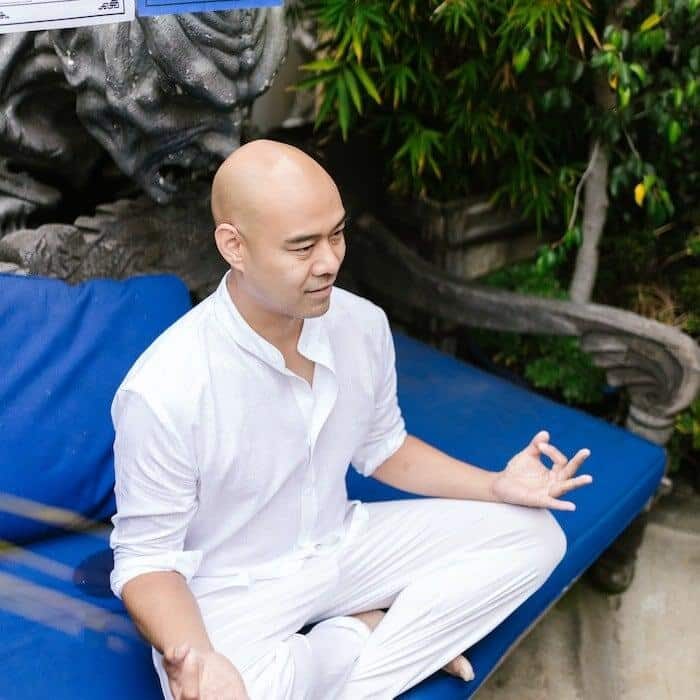
Foldable Zabuton
Foldable Zabuton This type of zabuton is designed with divided indentations that allow the cushion to be easily folded and stored when not in use. Though still bulky, this also allows the zabuton to be placed on a specialized carrier for relatively easy transport.
The key advantage of the foldable zabuton cushion is its versatility. By folding one end of the cushion, it creates an elevated seat, much like a zafu cushion. This makes it ideal for use in a variety of different settings, from meditation to yoga to simply sitting and relaxing.
The ability to fold and unfold the cushion also makes it easy to adjust the height and firmness of the cushion, allowing users to find the perfect level of support for their individual needs. When folded properly, the zabuton can serve as both the mat and cushion at the same time.
Orthopedic Cushions
These cushions are used by people experiencing chronic pain conditions, such as lower back pain or sciatica. This constant need for pain relief resulted in a portable and lightweight design.
How does an orthopedic cushion help with meditation?
In chair sitting meditation, an orthopedic booster cushion can be placed on a chair to raise the hips and tilt the pelvis forward, which can help to reduce pressure on the lower back and promote good posture.
This modification can make it easier to maintain a comfortable and stable seated position for longer periods, which is important for meditation and yoga practices.
Yoga Bolster Pillow
How does a yoga bolster pillow help with meditation?
Yoga bolster pillows are mostly made of firm foam or sponge and come in various colors, sizes, and shapes. They raise the height of a meditation seat or mat, making it easier to sit with a straight back and maintain proper alignment in the spine.
The cushions provide support for the legs and hips, helping to alleviate discomfort during long periods of sitting. They can be placed under the knees, hips, or ankles to help relieve pressure on these areas and improve circulation.
Some yoga booster cushions have a built-in convenient handle or strap, making them easy to transport and set up. Furthermore, some booster cushions also have a special design for yoga poses like the lotus pose.
This bolster pillow is your product if you practice both yoga and meditation.
Moxibustion Cushion
These meditation cushions are used and specifically designed to support the use of moxibustion therapy during meditation practice. Moxibustion Is a form of heat therapy that burns Chinese dried mugwort leaves near the skin (Indirect Moxibustion) or on the skin (Direct Moxibustion).
How does a Moxibustion Cushion help with meditation?
As Moxibustion Therapy and moxibustion cushion are connected, these cushions have holes or openings in the center to allow the heat for indirect moxibustion. They are made to withstand the heat of indirect moxibustion.
When sitting in this cushion, the heat holes allow the heat to travel through the body. In essence, these cushions stimulate acupuncture points and improve circulation by using heat while supporting the sitting body during meditation practice.
If you’re interested in trying moxibustion, then a moxibustion cushion is a good place to start.
Meditation Cushion Maintenance
Over time, your meditation cushion can collect dust, dirt, sweat, and other debris, which can create an unhygienic environment for your meditation practice. Your cushion needs to be cleaned regularly to maintain its appearance and longevity.
And aside from the aesthetics and lifespan, a clean meditation cushion also prevents possible allergies or sensitivities that may be harmful to your health.
Here are some basic instructions for cleaning a meditation cushion:
1. Check the care label
Before cleaning your meditation cushion, check the care label to see if there are any specific instructions or restrictions for cleaning. Some cushions may need to be spot-cleaned only, while others may be washable in the machine.
2. Remove any covers or removable parts
Most meditation cushions have removable covers that can be washed separately. If your cushion has any covers or removable parts, remove them before cleaning.
If you’re having difficulty removing the cover, try gently tugging on opposite corners of the cover to loosen it. If this still doesn’t work, consult the care instructions that came with your meditation cushion or contact the manufacturer for advice.
3. Spot-clean any stains
If there are any stains or spots on the cushion, spot-clean them using a mild detergent and a damp cloth. Be sure to blot the area rather than rub it, which can cause the stain to spread.
4. Wash the cushion
If your cushion is machine washable, wash it on a gentle cycle with a mild detergent. Use cold water and avoid using fabric softener, which can damage the cushion’s filling. Hang the cushion to air dry, or tumble dry on low heat if the care label permits.
5. Air dry
Allow the cushion to air dry completely before putting the cover back on. Do not use a dryer or direct heat, as this can damage the cushion. Air drying your meditation allows the cushion to dry completely without damaging the material or structure.
Then, test it to make sure that it is completely dry. Press down on the cushion with your hand to see if there is any moisture or dampness. If the cushion feels dry to the touch, it is ready to use.
6. Fluff the cushion
Once the cushion is dry, fluff it up by hand or in a dryer on a no-heat or air-only setting to redistribute the filling.
7. Reassemble the cushion
If your cushion has removable parts or covers, reassemble them once they are clean and dry.
Once the cover is closed, adjust the cushion as needed to make sure that it is comfortable and supportive. Fluff the filling or adjust the shape of the cushion as necessary. test it to make sure that it is completely dry. Press down on the cushion with your hand to see if there is any moisture or dampness. If the cushion feels dry to the touch, it is ready to use.
Conclusion
Meditation cushions are great partners for any practitioner. They make it easy for us to find our center.
Time is an essential aspect when it comes to meditation. It impacts the overall benefit of the session. The body and mind gain more the longer and deeper we are meditative.
If you want to achieve a more profound and rewarding meditation practice, then you can never go wrong in buying a meditation cushion.

FAQ
What are some ways to make meditation more comfortable for beginners?
- Find a quiet, peaceful space.
- Create a relaxing atmosphere (low light, comfortable temperature, soft music)
- Start with short meditation sessions (5-10 min), then gradually increase the time.
- Use a cushion or chair for comfort
- Focus on breath or an object/sound/mantra
- Be patient and non-judgmental with yourself
What Kind of Clothing Do I Wear When I Meditate?
When choosing to clothe for meditation, it is important to wear comfortable and non-restrictive clothing. Layering can also be helpful. Avoid tight or distracting clothing. The goal is to wear clothing that allows you to relax and focus on your practice.
Do I Need Background Music/Sound to Meditate?
Whether or not to use music/sound during meditation is a personal choice. Some people find it helpful, while others prefer to meditate in silence. Experiment with different options to see what works best for you. For those interested, Tibetan singing bowls are helpful instruments for this.
Does Meditating Make You Sleepy?
Meditation can be relaxing and may cause drowsiness, but it should not be used as a replacement for sleep. If you feel excessively tired after meditating, adjust the time of day or intensity of your practice. Make sure you are getting enough restful sleep and observe a good meditation practice.
[/read]



